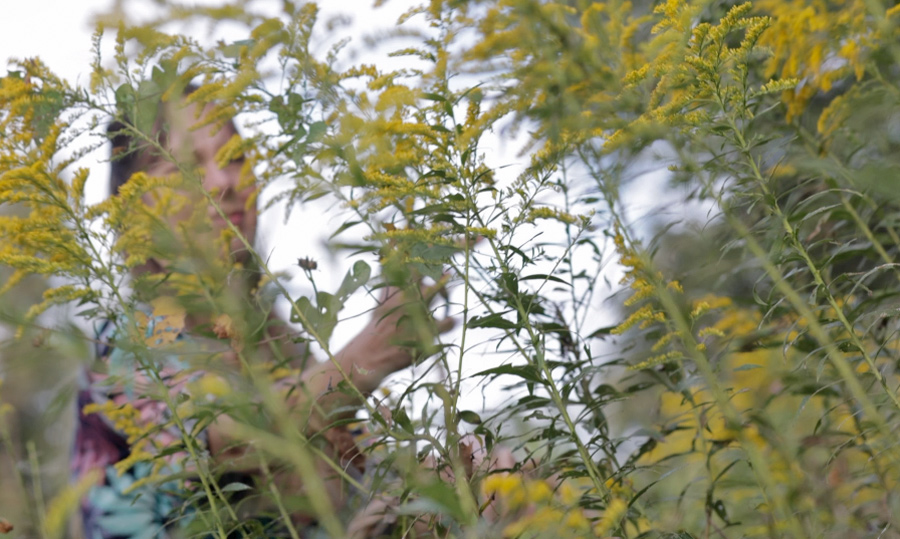A short film:
Over the last week we’ve been harvesting goldenrod and drying it for the future. It’s a natural anti-allergy plant, good for teas and tinctures. It also has multiple other uses.
Unfortunately, people get it mixed up with ragweed and end up blaming poor goldenrod for their seasonal allergies:
Goldenrod has been wrongly accused of causing hay fever simply because of its close association with the actual culprit: ragweed (Ambrosia spp.). Both plants flower at the same time, but ragweed has demure green flowers which are easily overlooked—so, by default or guilty association, goldenrod takes the heat. Common ragweed (Ambrosia artemisiifolia) has lacy-looking leaves that are divided and the plant branches freely. In contrast, goldenrod often has an unbranched stem (until it flowers) and its leaves aren’t divided. (For the record, ragweed isn’t all bad. Despite its propensity to induce a hissy fit in allergy sufferers’ nasal passages, ragweed is a native plant that plays an important ecological role—housing and feeding many insects.)
Compared to the wind-born pollen of ragweed (the better to find your nostrils, my dear), sailing through the air with golden abandon, goldenrod is insect-pollinated and doesn’t release its pollen into the air; therefore, you need to stick your nose right in its face to induce any kind of histamine reaction.
Goldenrod is a useful herb beyond just being an antihistamine:
Historically, goldenrod (Solidago canadensis or Solidago virgaurea) has been used on the skin to heal wounds. It has also been used as a diuretic, meaning it helps the body get rid of excess fluid. The name solidago means “to make whole.”
Goldenrod has also been used to treat tuberculosis, diabetes, enlargement of the liver, gout, hemorrhoids, internal bleeding, asthma, and arthritis. In folk medicine, it is used as a mouth rinse to treat inflammation of the mouth and throat.
A few animal and test tube studies suggest goldenrod may help reduce inflammation, relieve muscle spasms, fight infections, and lower blood pressure. It does seem to act like a diuretic, and is used in Europe to treat urinary tract inflammation and to prevent or treat kidney stones. In fact, goldenrod is often found in teas to help “flush out” kidney stones and stop inflammatory diseases of the urinary tract.
We need to go harvest more, as time is running out for this season.


3 comments
When you make something with the goldenrod, it would be great to see pictures and a recipe. Many people have never made a tincture, or tea from fresh flowers, and even a simple recipe like “about 2 Tbsp dried flowers in 8 oz boiling water” is helpful. A picture is really helpful because some herbs really pack down when they dry, so seeing the size of the pieces relative to the measuring vessel lets one know if an adjustment is needed.
I’m winging it as we go, but I’ll see what I can do.
Yes! Goldenrod is very useful. We make an infused oil with it (and a few other herbs) to use as a topical anti-inflammatory to good effect. It is fantastic on sore feet and joints especially. A good basic recipe for infused oil is 1 part dried herb to 2 parts oil by volume. We like to put everything in a mason jar and put it in a sous vide bath at 160 F for at least 48 hours. Coconut oil works perfectly and you don’t need to add beeswax to it after, as it is solid at room temp. We do sell our concoction on Etsy, if anyone is interested. https://www.etsy.com/listing/1326125233/anti-inflammatory-herbal-salve-coconut
Comments are closed.